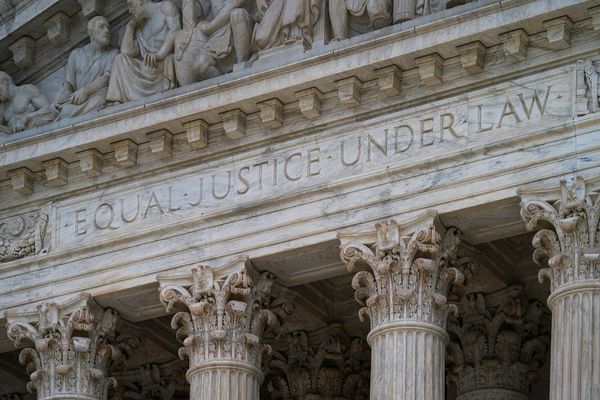
In the city of Los Angeles, every time the heavens open up, the hashtag #LArain trends on Twitter. People say rain, and the weather in general, is different in California. Anyone who has lived in the Desert Southwest long enough is fascinated by the rare appearance of rain and the wonder of a storm.
Every wind gust and raindrop is big news in L.A. In Arizona, the monsoon comes and goes every year like clockwork. But what precisely is different about rain in the desert? To find out, we asked a bestselling author, a storm chaser and TV meteorologists who have known both coasts.

From his home in Southern California, Dean Koontz, the bestselling author whose latest novel Quicksilver was published in January, has written dozens of books in which the weather adds to the suspense. According to Google Books Ngram Viewer, he mentions weather terms a total of 168 times in his book Midnight, 165 times in The Taking and 158 times in the aptly titled Lightning.
Koontz spent roughly half his life on the East Coast before he moved to California and that has given him an appreciation for the unique weather in the state. Why does weather feature prominently in his novels? Koontz told AccuWeather via email he uses the frequently changing Southern California weather as a template to set the scene.
“Here in Southern California, I can be basking in a light 80-degree off-shore breeze and, within two hours be in the snow country in Big Bear, be on the seashore in the morning and in Death Valley in the afternoon,” Koontz said. “The extremes fascinate me and make for good dramatic effects in fiction.”
“I believe that good writing needs to include vivid, succinct descriptions of the human environment, the natural world, and the weather,” Koontz went on, “all of which should serve the mood of the scene, the themes of the novel, and even key revelations about the characters.”
The movie L.A. Story features Steve Martin as a weatherman who tapes his shows in advance because the weather is the same every day. While that type of weather pattern is often true during the summer, winter can feature almost any weather condition in California.
We checked the archive and this has happened before. #LARain pic.twitter.com/43D5InDIos
— L.A. Public Library (@LAPublicLibrary) December 14, 2021
Retired AccuWeather Chief Meteorologist Elliot Abrams helped found AccuWeather 60 years ago and has no shortage of weather knowledge.
“In a book I once read,” he quipped, “a character is on a plane flying from the Northeast to the Desert Southwest and wants to start a conversation with a passenger in the next seat. The character turns to his seatmate and asks what the other person thinks about the weather. He does this to establish rapport and make himself come off as an ordinary person. Rather than answering directly, the other passenger looks at the character somewhat as if he was crazy, and within moments he recognizes his mistake — rather than coming off as normal, the character has wandered into a subject that isn’t much discussed in ordinary conversation in the Southwest.”
Best known for his stint as the weatherman on Good Morning America, Spencer Christian spent 22 years broadcasting the weather on television from New York City, and he has been a weather anchor at KGO-TV in San Francisco for the last 22. He explains how the weather works differently on the “left” coast:

“On the East Coast,” Christian said, “people are accustomed to severe or extreme weather conditions from time to time. East Coast residents may not enjoy extreme weather, but they take it in stride. On the West Coast, the weather is the lead story in every local newscast when there is moderate-to-heavy rain, a gusty wind pattern, sharp temperature fluctuations, and certainly on those rare occasions when thunderstorms occur.”
Inclement weather can be downright scary to California residents.
“I have heard from many viewers here in the Bay Area who are afraid to drive in the rain,” Christian said. “Some won’t even leave their homes if the forecast calls for lightning and thunder. Moderate rain can cause major traffic congestion and numerous accidents because Californians are simply unaccustomed to driving on wet pavement. Thunderstorms and gusty wind can cause outright panic. So, if you’re not from here but find yourself driving in California during ‘active weather,’ be prepared to exercise your defensive driving skills!”
AccuWeather Retired Meteorologist Ken Clark has lived in Rancho Cucamonga, California, for 30 years after spending his first 30 in the East and noted that there are a number of weather phenomena that cause big problems in California.
“Extreme snow falling in the mountains and passes can halt traffic altogether. Strong Santa Ana winds create their own problems,” Clark said. “Even for those driving in cars, it can be dangerous. I can’t tell you how many times I have had to dodge large tumbleweeds on the freeways during wind events.”
That’s something you certainly wouldn’t see in New York City or Atlanta.
“It doesn’t take much rain to cause traffic to snarl, people to complain, and news stations to go into ‘Storm Alert’ mode,” Clark added. “This is why rain events, and other weather-related hazards, are different here. What may seem like something rather normal to a person from the Midwest or East — it’s certainly not normal here.”

Statistically speaking, the rain (or lack thereof) is the most different between L.A. and New York City. The most likely time to see rain in L.A. is in February when the city averages 5.5 days of rain per month. February is one of only two months that New York City dips below five days of precipitation in a month, on average. From May to September, it’s extraordinarily dry and almost impossible to get rain in L.A., while rainy weather continues to ramp up in the Big Apple, peaking in August.
Koontz described how water — and therefore rain — is such a central concept to the state of California.
“Many politicians since [the 1980s] have been stunningly irresponsible about water, even to the extent of closing reservoirs, and they resist every reasonable option to keep the state hydrated. We have lost tens of thousands of acres of farmland and, should nothing change, there will eventually be long-term rationing that will bring the state to economic ruin,” he said.
Christian agreed that the rain is beneficial to the state’s sanctitude and also of crucial importance to battle one of the scariest features of weather on the west coast: dangerous wildfires.
“In California, light rain is an event to celebrate, because it keeps the vegetation green and reduces wildfire concerns,” he said.
Brianna Ruffalo, a meteorologist for ABC7 in Los Angeles, explained that wildfires are key when driving interest in the rain.
“We have such bad wildfire seasons due to our strong Santa Ana wind events, we constantly anticipate rain and how much we will get with each event because our vegetation dries out so quickly due to lack of rain in combination with our offshore winds,” Ruffalo said. “We also have a large population here, so impacts from rain can affect a lot of people and commuters.”

Even when the rain comes, the danger isn’t over.
“We often see wildfires ignite in populated areas — so once the rain comes, mudslides and debris flows in recent burn scar areas can cause damage,” Ruffalo added.
Clark shared an amusing story that his fellow meteorologists greatly appreciate:
“One specific example, sort of comical, sticks out. Just before I moved to Southern California I was visiting. It was a June morning. The sky was laden gray, the air moist. A little light drizzle was falling barely making paved surfaces damp. I had a bunch of people come up to me that morning asking me, ‘What’s with all this rain? This is terrible, I can’t stand when it rains this much,’ et cetera. A drizzle that would hardly be noticeable, nevertheless impactful, in many areas of the United States, greatly impacted these people,” Clark mused. “It just shows how unusual rain of any kind is and how important it is to forecast any occurrence, no matter how small.”
Ruffalo was born and raised in L.A. County and, after a stint delivering weather forecasts for ABC30 in Fresno, is back forecasting the weather for her hometown. And like the L.A. area, Fresno has its own unique weather that is distinct from anywhere else.
“In Fresno,” she explained to AccuWeather via email, “fog is a big deal in the Central Valley, as they get some of the worst fog in the country. School schedules often get delayed during ‘fog season’ and kids (and their parents) will be on ‘foggy day schedules.’ Rain (and snowpack) is also very important in central California because of agricultural interests.”
If that’s not unusual enough, San Francisco even has two competing Twitter accounts that are “written by” the fog: @KarlTheFog and @Fog_Karla.

“I’m amused,” Koontz said, “in a dark sort of way, that so many Californian motorists, confronted with blinding fog, plunge into it with undiminished speed — until they confront immovable objects.”
“Central California weather is typically cooler and breezier than Southern California weather, especially in the summer — when the San Francisco Bay Area experiences cooling coastal fog that surges onshore in the evening and retreats out to sea in the late morning and midday hours. An almost winterlike chill is not uncommon in San Francisco in July and August,” Christian added.
Bay Area residents are often amused by summertime tourists, said Christian, who think the entire state basks in Southern California’s warmth.
“By late afternoon on a typical summer day, as the chilling fog surges onshore, scantily clad tourists can be seen ‘storming’ the souvenir shops to by long-sleeved sweatshirts, long pants, and windbreakers,” he said.
Steve Steinke grew up surrounded by corn and bean fields about 60 miles west of Chicago. He became known as his hometown’s weatherman, reported about the weather in the local newspaper and co-founded the Association of American Weather Observers in the 1990s. AAWO was a group that published a monthly weather magazine for thousands of “weather weenies,” telling their stories and sharing weather observations.
In 1997, Steinke relocated to Arizona to be with his future wife. He was amazed at how different the weather was in the American Southwest. His founding principles of weather observation were shaken when he moved to Arizona.
“The upper Midwest has four distinct seasons,” Steinke told AccuWeather via email. “It’s an easier environment to predict the large-scale behavior of weather and storms.”
“The Desert Southwest is dramatically different. [Local weather is] much more affected by the monsoon or the winter seasons. There’s also a topographic impact on the weather here,” Steinke pointed out. “We have mountains above 12,000 feet and thousands of square miles of desert.”
William Reid is a climatologist and a “different” kind of storm chaser, born and raised in Inglewood, California. Although he chases tornadoes in the Plains each spring along with other storm chasers, he also chases the “weather de jour” in Southern California.
“I am always looking for a reason to get away from the house and to find something interesting in the sky to photograph. Locally, I chase anything with thunder, though that is usually just a short jaunt to a nearby hilltop with a view. The traffic here makes storm chasing a losing proposition,” Reid told AccuWeather via email.

He also photographs high surf, wave clouds, monsoon thunderstorms, high wind events, and even hot weather, having been in Death Valley on days when it was as hot as 129 degrees. To Reid, the local weather is fascinating because “there are a myriad of different climates in Southern California, mountain, desert, valley, coastal, beach, canyon, et cetera — each with large contrasts in temperature and precipitation amongst them.”
“I hide max/min registering thermometers in local cold spots! I have been seen trudging up and down hillslopes at sunrise with a [sling] psychrometer twirling around. I have had a thermometer sensor sticking out of the window of my car since the mid-1980s,” said Reid.
“What folks elsewhere in the country might find interesting, or weird,” Reid continued, “is that most locals likely have a strong notion that, since summer weather is sunny and dry here, it must be the same in most places. There is a strong notion that storms and summer are mutually exclusive — that hot summer weather effectively negates storm activity. In other words: It can’t rain if it is warm out, because rain only occurs in the winter when it is cool outside.”
In the end, people who grew up east of the Rockies may struggle to understand the intricacies of weather in the West, but that’s what makes it so important and unique… and for Koontz, the weather is one tool that has enabled him to churn out book after book for more than 50 years.
For the latest weather news check back on AccuWeather.com. Watch the AccuWeather Network on DIRECTV, Frontier, Spectrum, fuboTV, Philo, and Verizon Fios. AccuWeather Now is now available on your preferred streaming platform.
Produced in association with AccuWeather.com.







